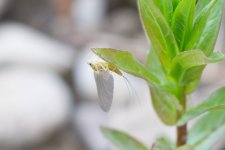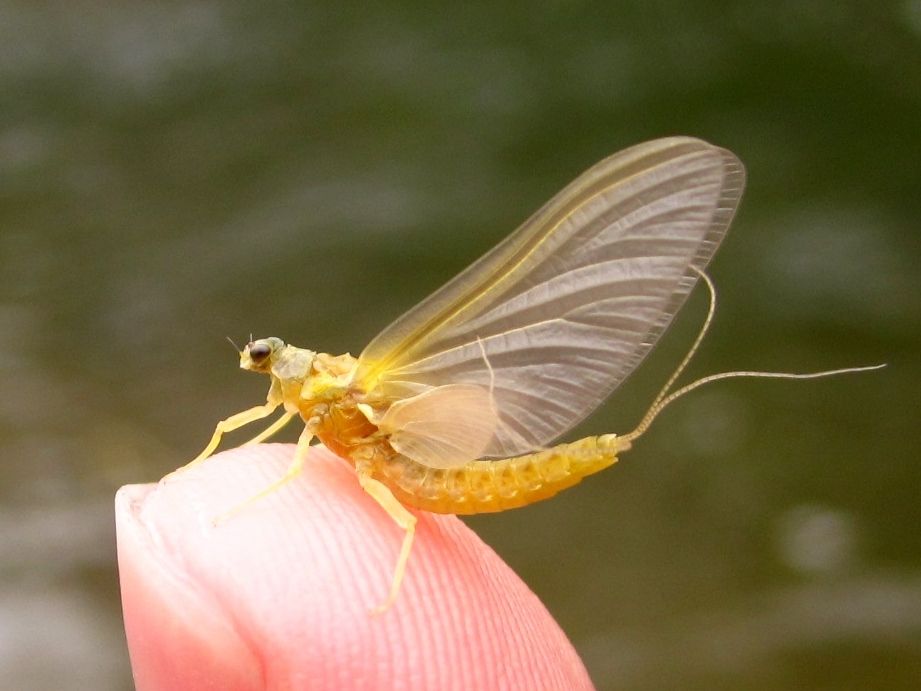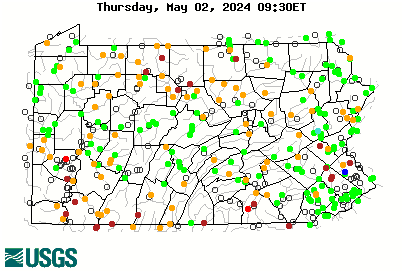Ephemerella Invaria - Sulpher
Reasoning, do I get credit for showing my work? (no seriously, more as an example to the beginners at this).
Noticing plain wings, large hind wing, 3 tails, that already narrows you down to these Genus's:
Anthopotamus, Attenella, Baetisca, Caudatella, Drunella, Ephemerella, Leptophlebia, Paraleptophlebia, Serratella, Timpanoga
Using the size of 10-11 mm given, you can eliminate Attenella, Serratella, and Timpanoga. That leaves us with:
Anthopotamus, Baetisca, Caudatella, Drunella, Ephemerella, Leptophlebia, Paraleptophlebia
It is not a Baetisca (armored mayfly, wrong basic body shape), Drunella, Leptophlebia, or Paraleptophlebia (color too light).
So we're left with anthopotamus, caudatella, and ephemerella genus's. Now is where it starts getting a little bit tougher.
Anthopotamus - golden drake. Could be, but I've seen them and it just doesn't "look" like one. So I'm gonna say NO.
Caudatella - listed by Troutnut as a western genus, not eastern. So I'm gonna say NO.
Ephemerella - ding ding ding, we have a winner.
Now, which species? Throw out the hendricksons in the ephemerella genus, this is too light colored for that.
So, of the more common eastern species, we have:
Dorothea
Invaria
These two species make the primary SULPHER hatch. Now, Invaria comes first, and typically is like a size 14-16, which corresponds about from 9-12 mm. Dorothea comes later and are about 7-9 mm in length (size 16-18).
So, based on size, I'm guessing you have yourself a Ephemerella Invaria - commonly known as a sulpher, or "big sulphers" for people that separate the 2 main species.








